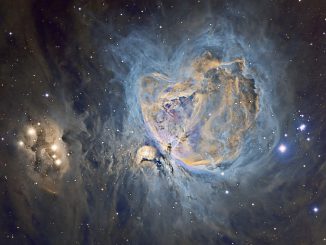
Glowing stellar nurseries in a web of cosmic filaments
A vast star-forming region as seen by the European Space Agency’s Herschel space observatory shows a tangled web of filaments with embedded hot spots where stars are being born. Observations of such filaments indicate a common process is at work to generate such filaments — and stars — from the interstellar medium.









